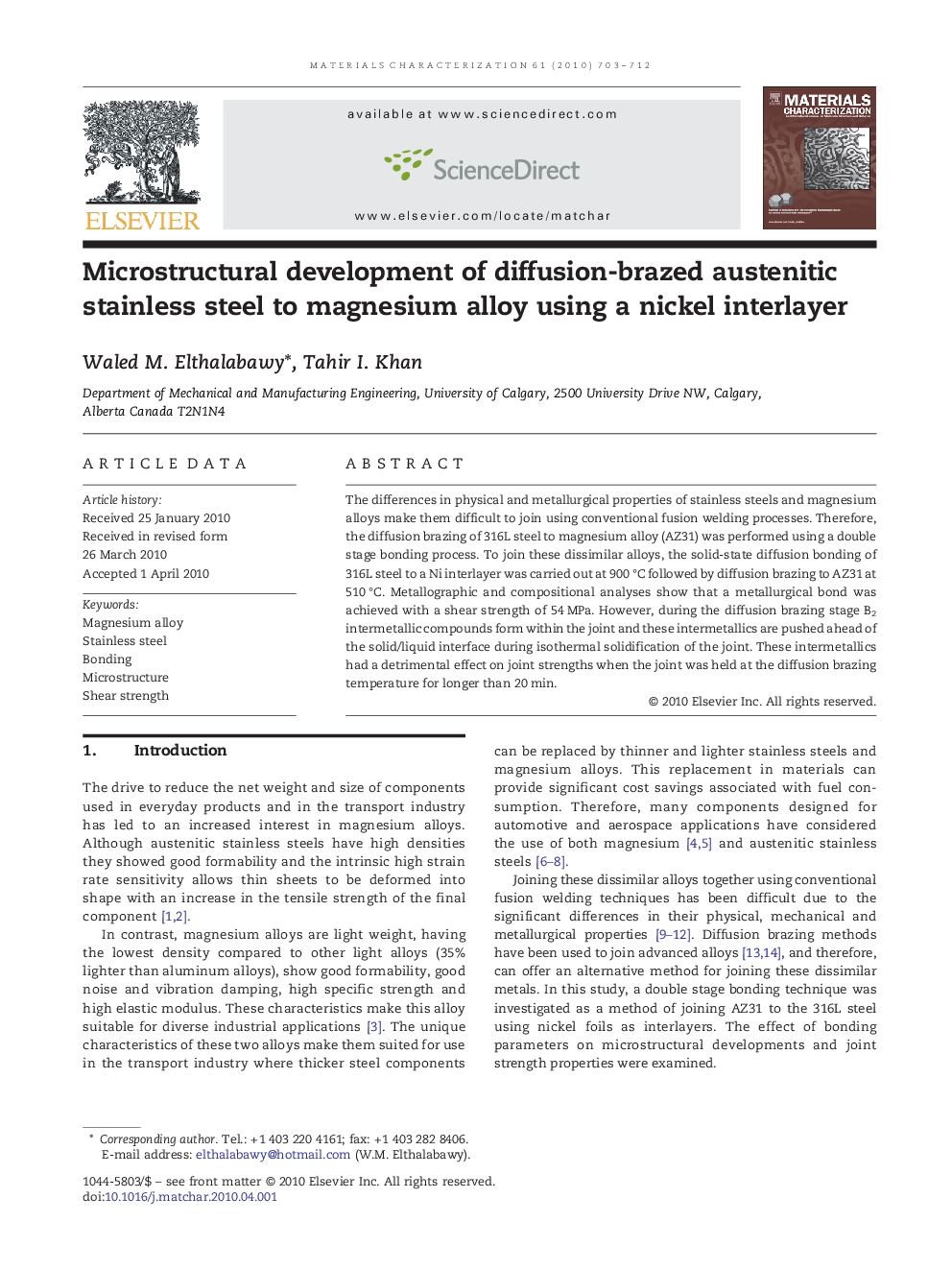| Article ID | Journal | Published Year | Pages | File Type |
|---|---|---|---|---|
| 1571648 | Materials Characterization | 2010 | 10 Pages |
The differences in physical and metallurgical properties of stainless steels and magnesium alloys make them difficult to join using conventional fusion welding processes. Therefore, the diffusion brazing of 316L steel to magnesium alloy (AZ31) was performed using a double stage bonding process. To join these dissimilar alloys, the solid-state diffusion bonding of 316L steel to a Ni interlayer was carried out at 900 °C followed by diffusion brazing to AZ31 at 510 °C. Metallographic and compositional analyses show that a metallurgical bond was achieved with a shear strength of 54 MPa. However, during the diffusion brazing stage B2 intermetallic compounds form within the joint and these intermetallics are pushed ahead of the solid/liquid interface during isothermal solidification of the joint. These intermetallics had a detrimental effect on joint strengths when the joint was held at the diffusion brazing temperature for longer than 20 min.
